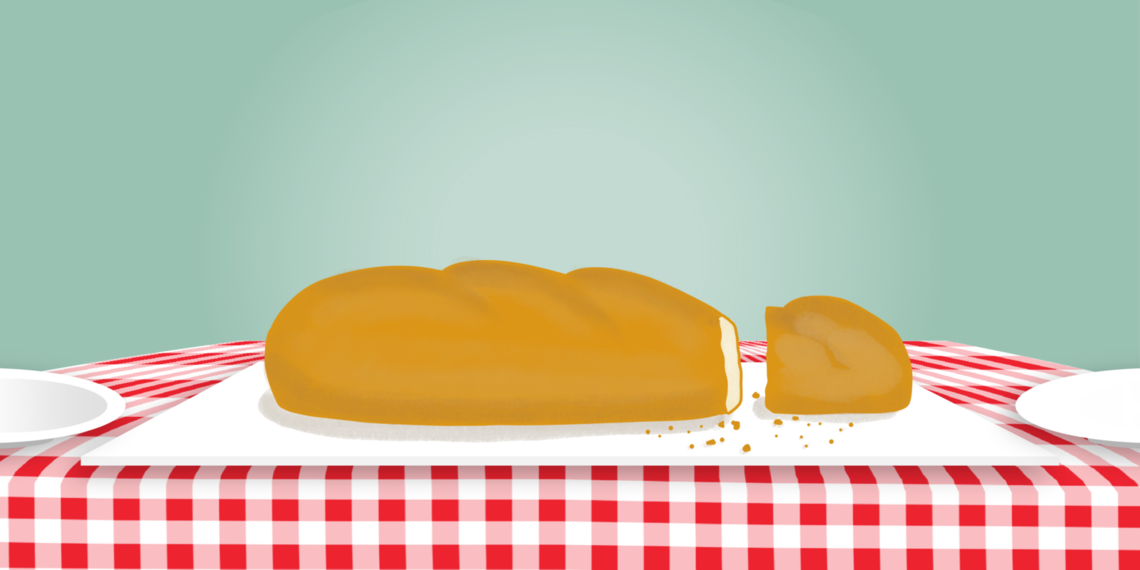he COVID pandemic really changed how health care clinics work. Almost all of our meetings were on Zoom, and many providers were doing telemedicine without coming to the office. While these virtual workflows helped keep us safe, it also disconnected us as a team. We rarely were together and often felt nervous about getting each other sick.
We needed a way to reconnect with each other and spend time together again. With the help of the Resiliency Center, we developed Commensality Groups.
What are Commensality Groups?
Commensality Groups bring together people who share common experiences around a meal. The act of "breaking bread together" can build meaningful connection and a sense of community by offering each other support and getting to know one another. They can also provide a space to share tips on managing work-life balance and improving mental health.
How did you get it off the ground?
The Resiliency Center brought us the idea of hosting a Commensality Group based on other health systems that have benefitted from them, such as Stanford Health and Mayo Clinic. We polled our providers about the idea to gauge interest and found that they were interested in connecting with one another.
Although our providers were interested, they didn’t want these groups in the evenings or weekends, when they were with their families or friends. We decided to hold these groups during four different lunch meetings as a pilot project. We limited the first groups to six to eight people so we could really communicate. With funding from the Resiliency Center and our physician group, we were also able to buy everyone lunch.
For our first meetings, we set a goal of focusing on good things. We didn’t want to be commiserating and feeling tired together.
We want to spend joyful time together, learning from each other and celebrating positive things. These goals got us off to a great start.
How does it work?
These meetings worked well thanks to administrative support from Community Physicians Group (CPG). Our adminstrators blocked an hour in everyone’s schedule and determined which days were best for the lunch meetings based on who was in clinic. They also reserved the room and ordered lunch. While some people were still late of course, almost everyone was able to enjoy the first lunch hour. Clarifying who was in charge of these tasks really helped the group run smoothly.
We also assessed a pre- and post- survey that we designed with help from Megan Call in the Resiliency Center. The Pre and Post survey for the groups showed improvements in provider burnout scores in the following areas:
- Emotional Exhaustion
- Depersonalization
- Job Satisfaction
- Quality of Life
Before each meeting, we also planned out topics to discuss. For the first meeting, Trinh Mai from the Resiliency Center led a discussion on any silver linings of the pandemic and what we’ve all struggled with. We talked about having more time at home with families and how our kids had fewer activities. Overall, we didn’t want to be too structured in these conversations. We wanted everyone to have the opportunity to share and to ask for help when they need it.
We’ve also talked about things like:
-
Our families
-
Our hobbies
-
Vacations or trips we have or will take
-
Big events in our lives like weddings and graduations
-
Recipes and restaurants we love
Tips for getting started?
If you’re looking to start a Commensality Group, I strongly recommend getting administrative support and buy-in right off the bat. Make sure everyone on the team knows about the lunches, assign tasks like reserving rooms or blocking times, and find out what dates are best.
You also need buy-In from providers. You need to know when, where and how they want to meet, whether that is breakfast, lunch or even an afternoon meeting. Find out if people want food and from where. Encourage new providers to come so they can meet others and feel like a part of the team. Sorting out these practical matters before you start helps everyone participate.
I’d also encourage you to have a facilitator, even if you are having an unstructured conversation. The Resiliency Center can be a great help in keeping discussions on track and providing professional support on how to cover difficult topics.
For me, these groups have helped get a sense of what the different teams in our clinic are doing. It helped me better understand our successes and challenges. These groups really gave our group, and can give your group, a chance to share and work together toward better provider mental health and well-being.
Margaret Solomon
The U of U Health Resiliency Center shares a growing list of resources you and your team can use to continue building resilience together.
Stress manifests itself physically in the body. Throughout the past year, we’ve all been exhibiting stress physically to varying degrees. Tasha shares exercises and tips to reduce the physical manifestation of stress.
Mindfulness and Integrative Health researcher Adam Hanley and colleagues have shown integrating brief mindfulness practices into a variety of patient care settings can reduce pain, medication use, and improve patient satisfaction. Here’s how to try it out in your own practice.
